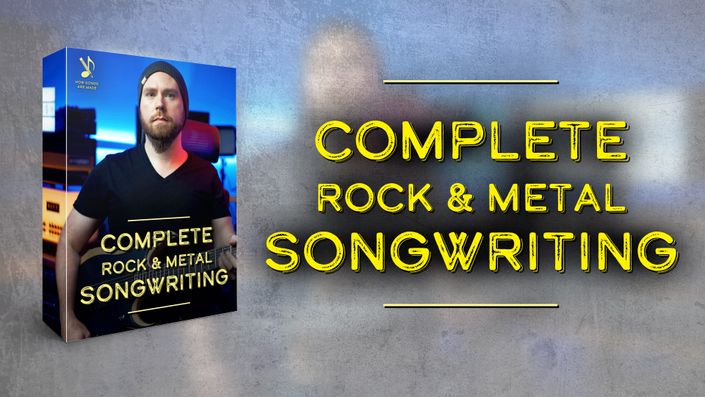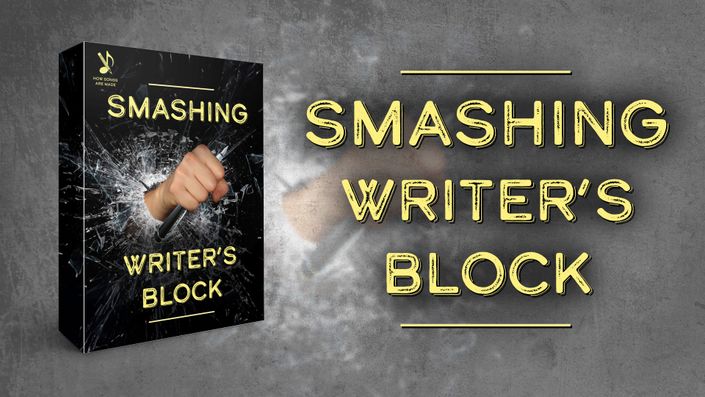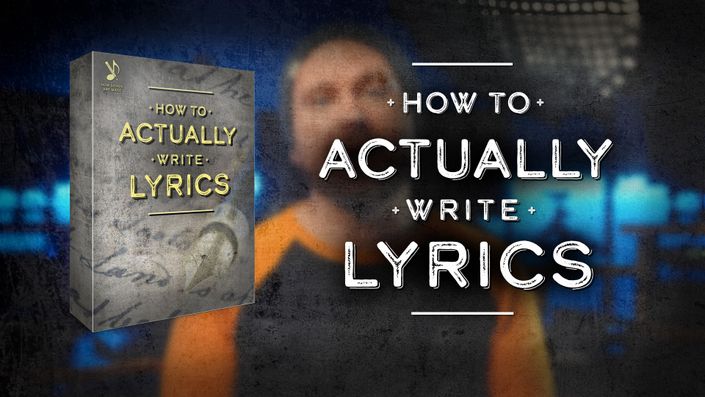Making Symphonic Metal with Free VSTs
You can compose realistic, epic symphonic metal right from your laptop at home, without spending a dime on plugins or software...
...even if you've never programmed a single orchestral instrument before.
And I'm gonna show you how.
Click to grab the course now at 50% off for Black Friday - before the price goes up!
It's Time To Make Your Music
HUGE
Nightwish. SepticFlesh. Dimmu Borgir.
They're not just normal metal bands. They've become something...more.
Something BIGGER.
Sure, they've got a bigger budget than you and me - but that doesn't have to stop you from making YOUR music as epic as theirs.
Big budget isn't the only way to get BIG orchestral sound anymore.
Greetings Fellow Songwriter,
Trey Xavier here. You might know me from my 200,000-subscriber YouTube channel, my blog Gear Gods, or from the dozens of collabs and interviews I’ve done with some of the top artists in metal.
But what you might not know is…
Epic Symphonic Metal is my favorite genre of music.
In fact, I went to not one but two music colleges to learn how to compose symphonic music.
There’s nothing else like it. It transports you to another realm. It makes you feel ALIVE.
And that’s because…
The addition of an orchestra and choir offers so much more musical language to create with.
Guitar, Bass, Drums, Vocals… that’s just another metal song.
But throw in some strings, brass, winds, choirs, and percussion, and you’ve created a whole new universe of epic fantasy, feeling, and adventure.
If you’ve listened to symphonic metal, you know exactly what I’m talking about.
And you’ve probably wanted to create symphonic metal just like your favorite bands.
I’m talking about symphonic metal in the style of:
- Nightwish
- Dimmu Borgir
- Septicflesh
- Fleshgod Apocalypse
- Blind Guardian
…and many others.
There’s just one problem:
You’re probably not an orchestrator. And you probably don’t have access to an entire choir and orchestra.
So…how can you get started making epic symphonic metal?
Simple:
You just need someone to show you how it’s done.
And even better: How to make it with 100% FREE plugins.
That’s what I’m gonna show you in my brand new course:
In this simple, fun, follow-along course, I’ll show you how to create ultra-realistic symphonic metal songs in your DAW using 100% free virtual instruments.
Here’s how it works:
1. I’ll show you the fundamentals of orchestration. Even if you don’t know the difference between a violin and a viola, don’t worry. I’ll give you what you need to know to get started.
2. I’ll give you a list of the best-sounding free orchestral + choir VSTs. These are plugins that will play the parts for you. All you have to do is download them and program the notes. Speaking of which…
3. I’ll show you how to program the MIDI parts to sound realistic. The trick is to know how each plugin works, and how to manipulate the settings to mimic how real orchestras and choirs sound.
4. I’ll show you how to compose your own symphonic metal song, including a symphonic motif, transitions, incorporating the metal, and much more.
By the end of this course, you’ll be able to compose realistic symphonic parts to add to your metal songs. And you’ll be able to proudly and confidently call yourself a symphonic metal composer \m/

Stop using the WRONG sounds
You've been struggling with creating the massive, epic symphonic sounds you want - but until you start utilizing the right free virtual instruments in the best combinations, you'll never be able to create the spine-tingling heroic sounds you hear in your head.
With my formulas for orchestral combinations, you'll be dropping emotionally devastating symphonic metal bangers in no time!
Free doesn't mean bad.
There's so many great free orchestral sample libraries out there - take advantage of them! I'll show you how to use them in a way that sounds realistic, natural, and powerful.


These aren't your grandpa's cheesy fake orchestral sounds.
It used to be that you needed to have some state-of-the-art Kurzweil sampler keyboard to get decent symphonic sounds (and even then, they weren't very good).
Then it was Vienna Symphonic Library (thousands upon thousands of dollars and a dedicated second PC) or nothing.
These days, even the FREE sample libraries are incredibly realistic and good sounding - and I've rounded up all the best ones for you, and I'm gonna show you how to use them.
Never written for an orchestra before?
Not a music theory expert?
No problem.
This course gives you an overview of orchestral instruments, how they sound, and when you should use them.
You’ll discover how to:
- Program realistic-sounding performances with orchestral VSTs
- Humanize and articulate with velocities
- Align midi notes and deal with pre-attack in each plugin
- Make each plugin sound expressive
- Layer orchestral instruments over metal songs
And so much more...

Programming MIDI - the RIGHT way!
Making sample libraries sound realistic comes from knowing how to control them - with the power of MIDI, you can make them do what you want.

Go beyond the typical
guitar/bass/drums of all the other metal bands out there
Everybody loves a good heavy riff - but there's only so much you can do with a rock band format. Expanding your sonic palette with rich layers of orchestral sounds will set your music apart from the thousands of clones out there.

Enhance the Heavy
Make your metal heavier with bombastic brass sections, sweeping strings and haunting choirs.

Watch Me Do It
In this course, I won’t just tell you a bunch of hypothetical stuff. You’ll watch me orchestrate a song in real time, so you can see the full process as well as my entire thought process.
Already have some orchestral plugins? No problem. You can still follow my method for creating sounds and composing orchestral parts
Here's EVERYTHING in the course:
- Choosing Sounds for the Main Motif (19:38)
- Developing the Motif (15:46)
- Stacking Sounds (4:19)
- Percussion (6:25)
- Choir Stacking (10:24)
- The Most Epic Instrument (2:50)
- THE METAL (4:12)
- The BIG Stack (16:03)
- Building On The Intro (6:27)
- Reinforcing the Metal (6:39)
- Adding Winds (4:28)
- The Climax: Melody (5:30)
- The Climax: Accompaniment (21:50)
- Adding Decoration (16:26)
- Enhancing Transitions (3:44)
- Revising The Intro (8:16)
FAQ
How long will it take to go through the course?
The course is 3 hours long. So I estimate it will take the average person 3-5 days to go through it. But the course is meant to be like a “guidebook” that you refer back to repeatedly as you’re working on orchestrations.
Uh…is this gonna be hard?
Nope. I make it as easy as possible with this course. Even if you’re brand new to orchestration or programming parts, I show you what to do every step of the way. If you already love symphonic metal, you have everything you need to get started in this course.
Do I need to know music theory?
Knowing music theory will help, but it’s not required. As I explain in the course, most of my symphonic metal compositions come from experimentation and creating what “sounds good”. I went to 2 music schools, and I know a ton about music theory, but this is still how I do most of my composing. So if you feel like you don’t know a lot of music theory, you’ll be perfectly fine!
Do I need to know stuff about the instruments of the orchestra?
Nope. There's a module in the course called “Orchestra 101”. I’ll show you how the orchestra works, what each instrument brings to the table, and all the other fundamentals you need. And as I explain the course, most of my symphonic metal compositions come from experimentation and creating what “sounds good”. So there’s nothing wrong with writing parts without knowing “formal academic orchestration”.
Do I need to have keyboard skills?
No, and as you’ll see in the course, I don’t have much in the way of keyboard skills. It certainly helps to have a little, but you don’t even need a MIDI keyboard at all to do this.
I just want to add some symphonic sounds (like strings or choirs) not a full orchestra
No problem. I’ll show you the best free plugins to use for those parts. You can add as much or as little as you want to your songs. And it will sound awesome and ultra-realistic.
What software or gear do I need?
Technically all you need is a DAW (Pro Tools, Cubase, Logic, Reaper, or whichever you prefer) on your computer. If you’re recording guitars, bass, or vocals, you’ll need an interface and some cables. And I would also suggest downloading Kontakt as that’s how you’ll run most of these plugins.
I already have some orchestra/choir plugins. Can I use those?
No problem! You can use those too. You’ll probably learn how to use those plugins even better with the advice I give you in this course. And then you can always add to your collection with the free plugins I suggest in this course.
What about drums and bass? Do I have to record those for real?
I also show you some awesome VSTs for drums and bass. So no, you don’t have to record those for real, unless you want to. And yes, these plugins are 100% free too!
A bit more about about me...
Hello fellow songwriter! I'm Trey Xavier. You probably know me from my 240,000-subscriber strong YouTube channel formerly known as Gear Gods.
I’ve attended I've written hundreds of songs and analyzed thousands… Studied music at Berklee College of Music and Sonoma State University (I have a degree in music composition)... And learned everything there is to know about songs and songwriting.
In my career, I've written songs with artists from bands such as Trivium, Amaranthe, Between the Buried and Me, Soilwork, The Agonist, Spiritbox, and more. And I critique dozens of songs every week in my livestreams.
I've learned what works in songs (and what doesn't), so you don't have to reinvent the wheel every time. I'm here to share my knowledge of songwriting with you...to make it easier, faster, more fun for you to create memorable, rich songs that you’ll be proud of…and your audience will fall in love with.
Go Deeper
Stop playing at being a songwriter and actually learn how to do it today - I'll reveal all the secrets of the pros.




